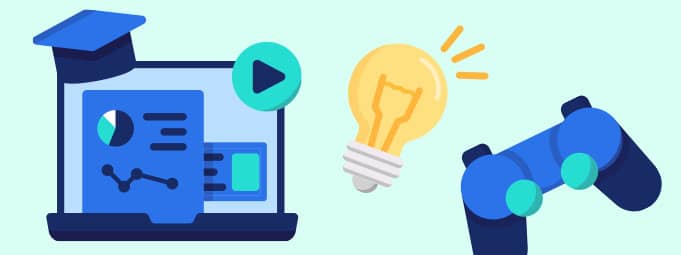
According to a Microsoft study, everyone’s attention span is shortening. It has dropped to eight seconds, four seconds shorter than when it was last studied at the turn of the millennium. A team of researchers from Princeton University and the University of California-Berkeley who studied the human brain found that attention pulses in and out at least four times per second. This means we are far more easily distracted than we once thought. As educators, we must be mindful of this and how it affects the classroom.
Microlearning achieves the same goals as traditional learning, but in less time. This emerging science benefits student retention, engagement, and motivation. But what is microlearning, and how can we incorporate it into the classroom?
Microlearning condenses educational materials and conveys useful knowledge quickly and effectively. The curriculum is broken down into well-organized “micro-units“. These micro-units assess the elements of an assignment and teach them step-by-step. Teachers organize the material so students can see and follow the processes sequentially.
Miller’s Law in the 1950s provided the structure for microlearning. According to this law, a human can recall facts quickly. When competing stimuli don’t dislodge short-term memories, consolidation occurs. Students absorb information best when they focus on a few topics at once. In other words, most people absorb information most effectively when they can pay attention to only a few things at a time.
Microlearning has clear benefits, like making it easy for students to remember what they’ve already learned. Also, using a variety of media resources, such as video, PowerPoint slides, and audio clips, makes material more engaging for students.
However, it’s important to keep in mind that microlearning isn’t appropriate for every lesson because it must be done quickly. Therefore, it is never possible to finish a topic in one sitting. Furthermore, you might not be able to discuss a topic in extensive detail in a single lesson.
Here are some helpful strategies for implementing microlearning in the classroom.
With microlearning, the time spent on tasks should be minimal, averaging a single activity. The average time spent on a micro-activity by a single student should be no more than ten minutes, while the average time spent by a group should be less than ten. This prioritizes essential information and removes anything unnecessary.
Here are some micro activities to engage your students:
Microlearning content allows students to study when it’s convenient for them. Learning easily becomes part of their day with micro-units available on demand, as opposed to lessons that are set to a strict schedule.
In addition, making units accessible on mobile devices encourages students to learn in their preferred manner. This can be taken further by providing offline access to learning materials, which can benefit students with limited internet connectivity.
Try presenting a menu of microlearning options from which students can pick. Allowing students access to a repository of microlearning resources provides them with autonomy and helps them remain focused on their studies.
Remember, each child develops their knowledge in different ways and at different rates. That’s the idea behind personalized learning. Each student is given an individualized “learning plan” that takes into account their unique learning style, prior knowledge, and areas of expertise. Contrary to the “one size fits all” mentality of conventional education, this method is more effective in helping students retain new information.
Adding variety to instructional approaches results in more engaging microlearning. After the information is presented, you can test your students on the material they just learned and maybe even offer a self-evaluation.
Instead of waiting until the end of a multi-week learning unit to assess, one of the benefits of microlearning is that after each of the short lessons, you can evaluate the lesson and the format to determine what aspects worked well and which did not. This allows you to make adjustments to the format for subsequent lessons.
The format of microlearning may not be appropriate for every lesson. You should always keep the limitations of your class in mind. Stay away from subjects that are too complicated for microlearning.
It may take some time for your students to acclimate to the new learning format and the different delivery methods. Remember to complete the cycle by evaluating the microlearning format and finding ways to improve it for use in subsequent topics and courses.
Efficient and Practical Learning at Renton Prep
Renton Prep is proud to provide a technology-driven curriculum to create the best possible opportunity for our students. Our teachers are proud Microsoft Certified Innovative Educators who always seek to enhance the educational experience through innovative teaching methods.
Contact us to learn more about our teaching methods or enrollment.